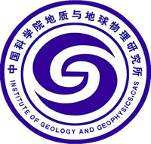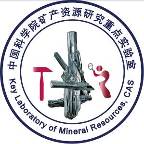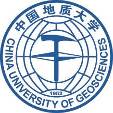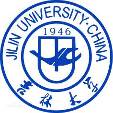|
News Center
|
Events
【9.8】Porphyry Cu-Au-Mo Mineralization System International Symposium(1st Announcement)
East Asia, and especially China, was influenced by the Paleo-Asian, Tethys, and Pacific geodynamic systems. This area is characterized by micro-continental blocks, many suture belts and polycyclic subduction-collision zones and soft-collision of these components has resulted in overlapping orogenic belts and polycyclic tectonic-magma-mineralization. In the Mesozoic, subduction of the Tethys, Pacific and Mongolia-Okhotsk plates and collision with North/South China Cratons formed the passive continental margin in east China. Yanshanian movement is the most important geological event in the east of China since the Mesozoic, resulting in the formation of complex tectonic-magma-mineralization. The Central Asian, Tethyan and Pacific Metallogenic Domains, located in the north orogenic belt of China and in nearby countries, host a series of large and super large porphyry deposits. There are various mineralization styles including porphyry copper, porphyry molybdenum, porphyry gold, porphyry copper-molybdenum (gold) and epithermal gold/silver. These deposits formed in a variety of tectonic settings including subduction, collision, and post-collision extension. Funded by a series of grants issued by the Natural Science Foundation of China (e.g., such as major project), 973 Project, National key research and development program), many researchers have been given the opportunity to undertake research into the porphyry deposit systems in the Central Asian, Tethys and western Pacific orogenic belts. These wide ranging results have contributed to our understanding of the geodynamic setting, crust-mantle interactions, magma-fluid evolution, source of ore-forming elements and the metal enrichment mechanisms for deposits in this region. The Key Laboratory of Mineral Resources, Institute of Geology and Geophysics, Chinese Academy of Sciences (Beijing) will be sponsoring a two-day symposium (September 8th-9th, 2018, Beijing) devoted to promoting the following fields: (1) Clarifying the relationship between different types of porphyry deposits and dynamic process; (2) Investigating the influence of porphyry magmatic and fluid systems on metal enrichment, migration and precipitation; (3) Revealing the connection between deep crust-mantle events and large-scale porphyritic mineralization; (4) Deciphering the factors governing metal provinces, grade and scale, and (5) Capturing the core scientific issues of large-scale mineralization. This symposium will build a platform to facilitate communication of achievements in the field of porphyry deposit system evolution in the three different metallogenic domains and will enhance exploration success in the region. We are warmly anticipating your attendance and participation in Beijing. Organizer Co-organizer Committees The President Scientific Committee Bernd Lehmann, Jeremy Richards, Peter Hollings, David Cooke, Brent McInnes, Zhaoshan Chang, Jamie Wilkinson, Richard Tosdal, Jeffrey Hedenquist, Chritoph Heinrich, Keiko Hattori, Dash Butulzii, Yusushi Watanabe, Akito Imai, Antonio Arribas, Eduardo Campos, Massimo Chiaradia, Noreen Evans, Wenjiao Xiao, Tao Wang, Jingwen Mao, Bei Xu, Weidong Sun, Yanjing Chen, Zhaochong Zhang, Hongrui Fan, Taofa Zhou, Pei Ni, Jianbo Zhou, Jianwei Li, Xianwu Bi, Yongjiang Liu, Qingdong Zeng, Ping Shen, Jinggui Sun, Xingwang Xu, Lianchang Zhang, Huayong Chen, Guiqing Xie, Bo Wan, Bo Wang, Yong Lai, Wenliang Xu, Yunsheng Ren, Yongfeng Zhu, Chunji Xue, Jiajun Liu, Qiang Wang, Huaying Liang, Xiaofeng Li, Guang Wu, Sihong Jiang, Zhiming Yang, Yuling Xie, Nuo Li, Jinxiang Li, Rui Wang, Tingguang Lan Secretary Important Dates
June 15th, 2018, release of the Second Announcement Symposium theme Post- symposium field trip Symposium communication type Abstract format Symposium fees and payment methods
|
-
SIMSSecondary Ion Mass Spectrometer Laboratory
-
MC-ICPMSMultiple-collector ICPMS Laboratory
-
EM & TEMElectron Microprobe and Transmission Electron Microscope Laboratory
-
SISolid Isotope Laboratory
-
StIStable Isotope Laboratory
-
RMPARock-Mineral Preparation and Analysis
-
AAH40Ar/39Ar & (U-Th)/He Laboratory
-
EMLElectron Microscopy Laboratory
-
USCLUranium Series Chronology Laboratory
-
SASeismic Array Laboratory
-
SEELaboratory of Space Environment Exploration Laboratory
-
PGPaleomagnetism and Geochronology Laboratory
-
BioMNSFrance-China Bio-mineralization and Nano-structure Laboratory







